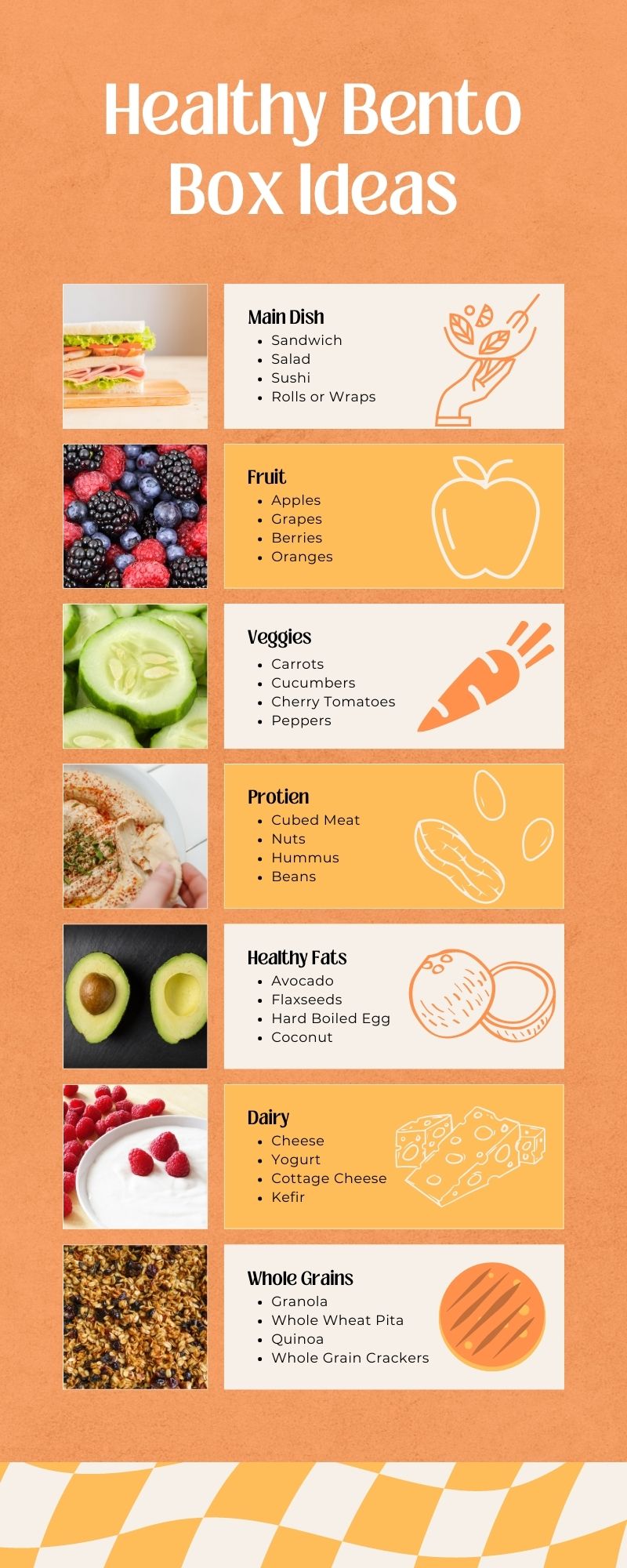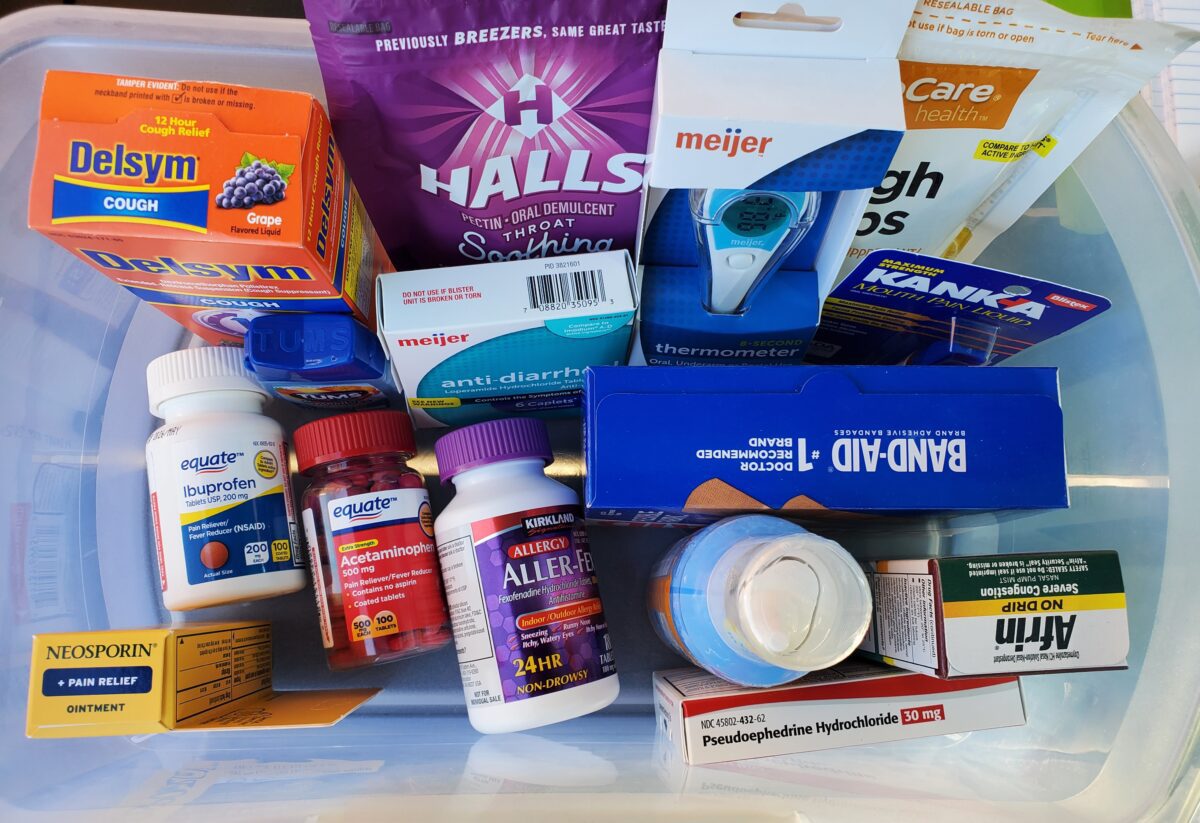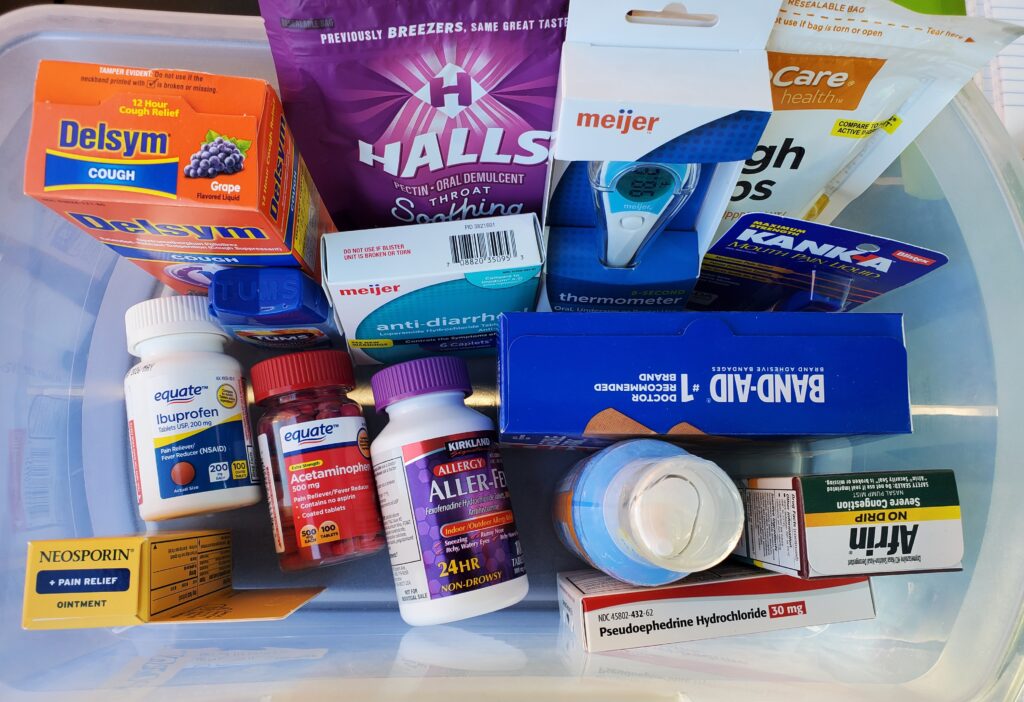It’s easy to make healthy packed lunches for kids and adults using a bento box. Use the healthy bento box packed lunch ideas for kids and adults above to make a balanced meal. School lunches sometimes get a little boring and repetitive, but these bento box packed lunch ideas will help you spice it up a bit. The free school lunches are mostly made up of processed food that lack fiber and fresh fruits and veggies. These bento box lunches are easy to prepare ahead and a much healthier option to the school lunches. They will also help your child learn to pack and eat healthy options for life.
Bento Box packed lunches are great for adults too. Make a quick and easy well balanced packed lunch for work. Packing a lunch saves time and money. No more waiting in line for food on your lunch break. Just sit down and enjoy your packed bento box, then use the extra time for a relaxing walk instead of waiting in line.
Disclaimer: This post may contain affiliate links. I earn commission at no additional cost to you.
What are Bento Boxes?
Bento Boxes are lunch boxes with sections that separate the different food options. They originated in Japan and initially contained common foods from that region. Mostly rice, fish, pickled vegetables and some fruit, to make a balanced meal. Bento is a Chinese slang term for convenient, which is fitting since they are very convenient for packed lunches.
Why Choose a Bento Lunch Box?
The Bento box makes a very convenient lunch box. It is so simple to choose items to fill the sections. The sections encourage small servings of a variety of foods to help include more food groups to make a more balanced lunch. The convenient sections also reduce waste from packaging. If your box doesn’t have enough sections you can purchase extra dividers. You don’t have to wrap sandwiches in paper or plastic. Many items like yogurt and apple sauce can be purchased in bulk instead of individual servings which not only reduces waste but also saves money. Check out my other post for more ideas on how to save money on groceries.
Which type of bento box is right for you?
Bento boxes are made in a variety of different materials, shapes and layouts. They are also available in reusable and disposable format. Here are some pros and cons of each option:
Wooden Bento Box:
Traditional wooden bento boxes come in a variety of shapes and sizes. They can have a variety of layouts. Some are stacked. Pros: They are traditional, all natural, BPA free, stylish and reusable. Cons: They are difficult to clean, not dishwasher safe, not microwavable, and my be difficult for young children to open and close. Wooden boxes are not able to keep liquid ingredients separated.
Lacquered Bento Box:
Traditional lacquered bento boxes come in a variety of shapes and sizes. These are most often found in restaurants. Pros: They are traditional, stylish, and reusable. Cons: Many do not come with tight lids for transport. If they do have lids, they may be challenging for kids to open and close. They are not dishwasher or microwave safe. They lack a tight seal and my not be great for liquids.
Plastic Bento Box:
Plastic bento boxes come in a large variety of shapes and sizes. These are the easiest type to use for a packed lunch. They are available in reusable and disposable varieties. Pros: They are lightweight, and easy to open and close, Plastic bento boxes can be dishwasher, microwave, and freezer safe, and are often BPA free. Cons: They are not traditional. Disposable varieties are not good for the environment.
Metal Bento Box:
Metal bento boxes are the most durable option. Pros: They are easy to open and close, dishwasher safe and BPA free. Cons: They are not microwave safe. Metal boxes do not have a tight seal may not be the best option for liquids.
Glass Bento Box:
Glass bento boxes usually have plastic lids. Pros: They are microwave, dishwasher, oven and freezer safe. Glass is BPA free and lids usually are also. They have a tight seal. Cons: They are fragile and heavy.
Insulated Bento Box:
Insulated bento boxes come in a variety of materials. There are stainless steel insulated bento boxes or plastic bento boxes with ice packs and an insulated exterior bag. Pros: They keep food insulated. Cons: they may or may not be dishwasher or microwave safe.
Paper Bento Box:
Paper bento boxes are single use and disposable. Pros: They are lightweight and disposable. Perfect for situations when you do not want to carry a container around with you for the rest of the day. Cons: They will not handle liquid ingredients, and they can leak. Disposable products are not environmentally friendly.
What are some Healthy Bento Box Packed Lunch Ideas for kids and Adults?
The Asian Bento box
This traditional bento box includes: sushi, snow peas, pickled ginger, and kiwi.
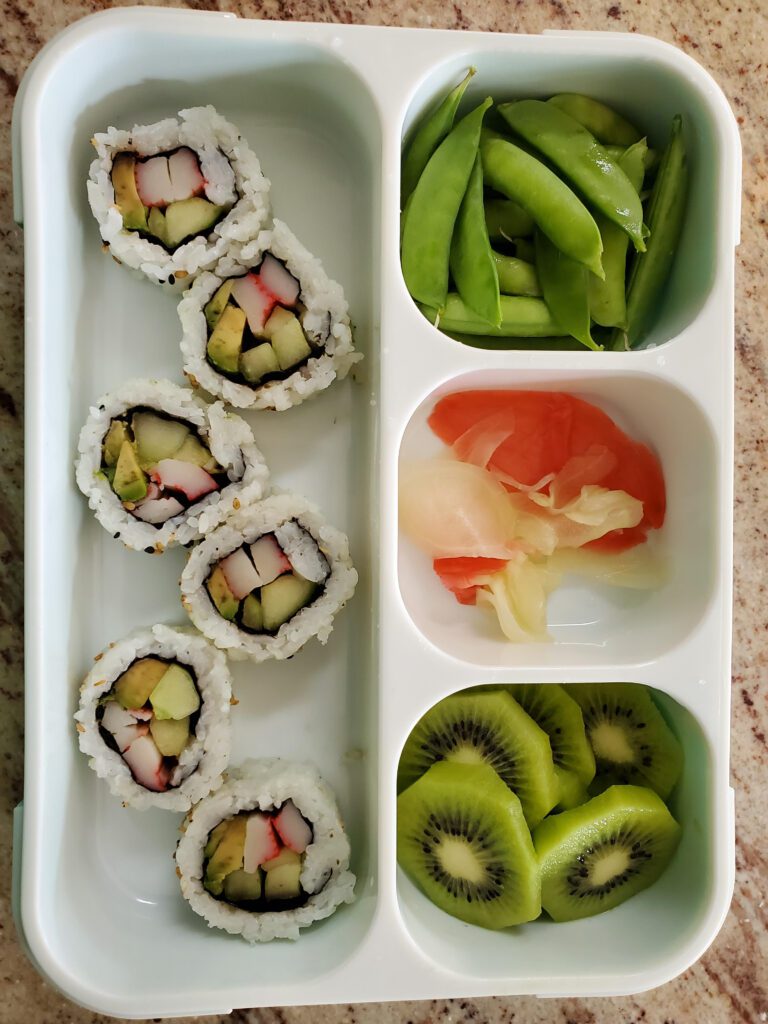
The Superfood Bento box
This bento box includes: Broccoli salad, blueberries, almonds, and Greek yogurt.
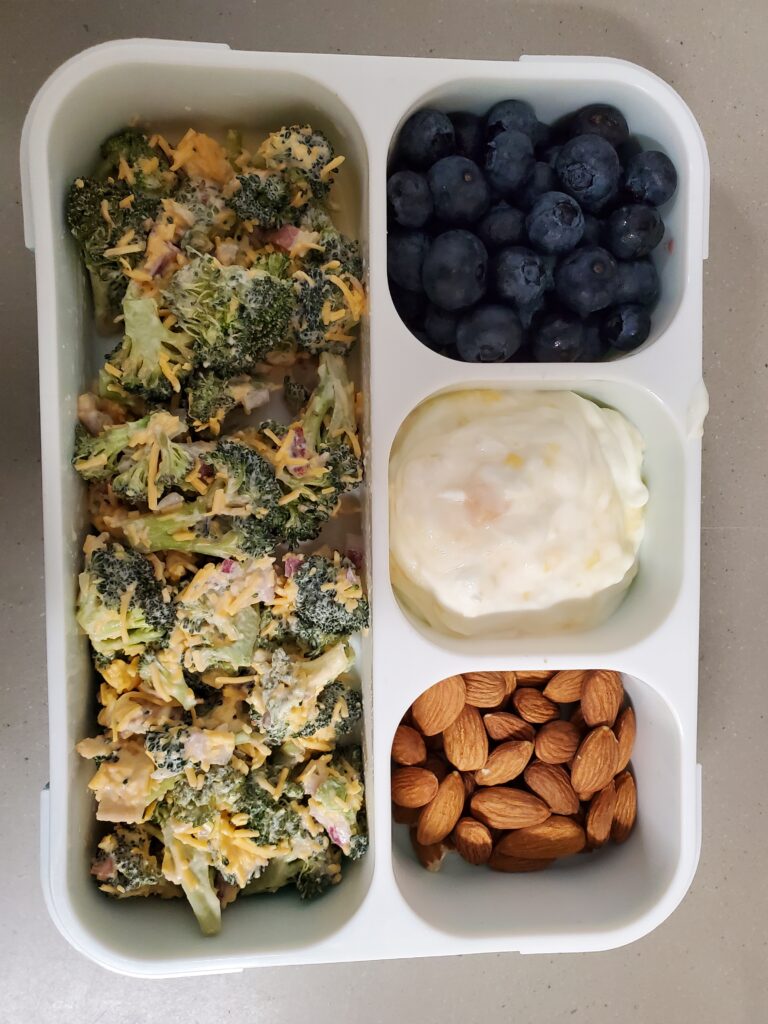
The Berry Nutty Bento Box
This bento box includes: Almond Butter and Jam sandwich triangles on Whole Wheat bread, blueberries, Greek yogurt, and granola. For a very healthy granola recipe check out my other post. This Bento box could also be a breakfast bento.
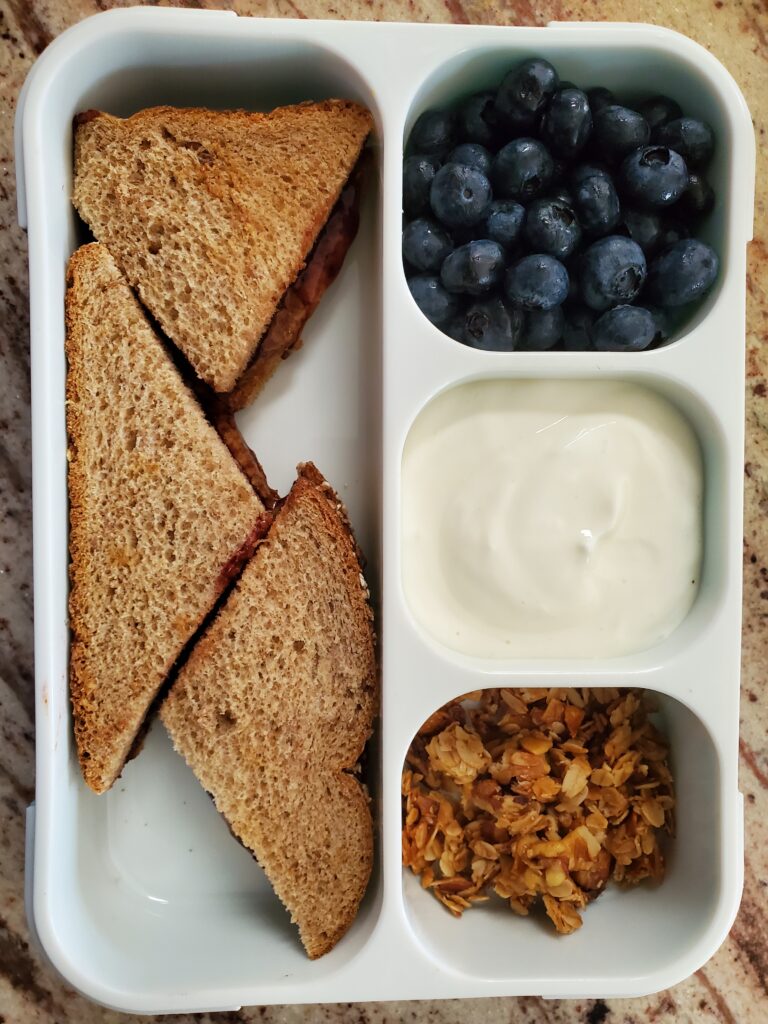
The Quick and Easy Box
For this Bento Box I just used whatever I had in the fridge. This Bento Box includes: Pasta salad, Raspberries, Oranges, and a hard boiled egg. Use the chart above to make any box you would like using the current contents of your fridge.
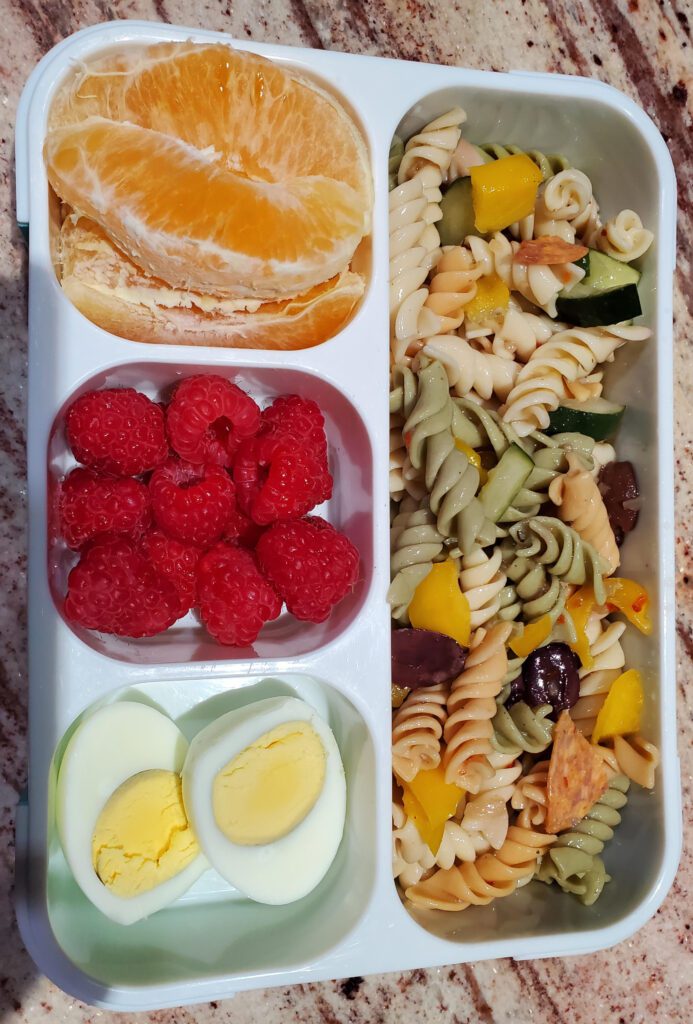
Greek Bento Box
This Greek bento box includes a Greek salad, grapes, Hummus, and whole wheat Pita bread.
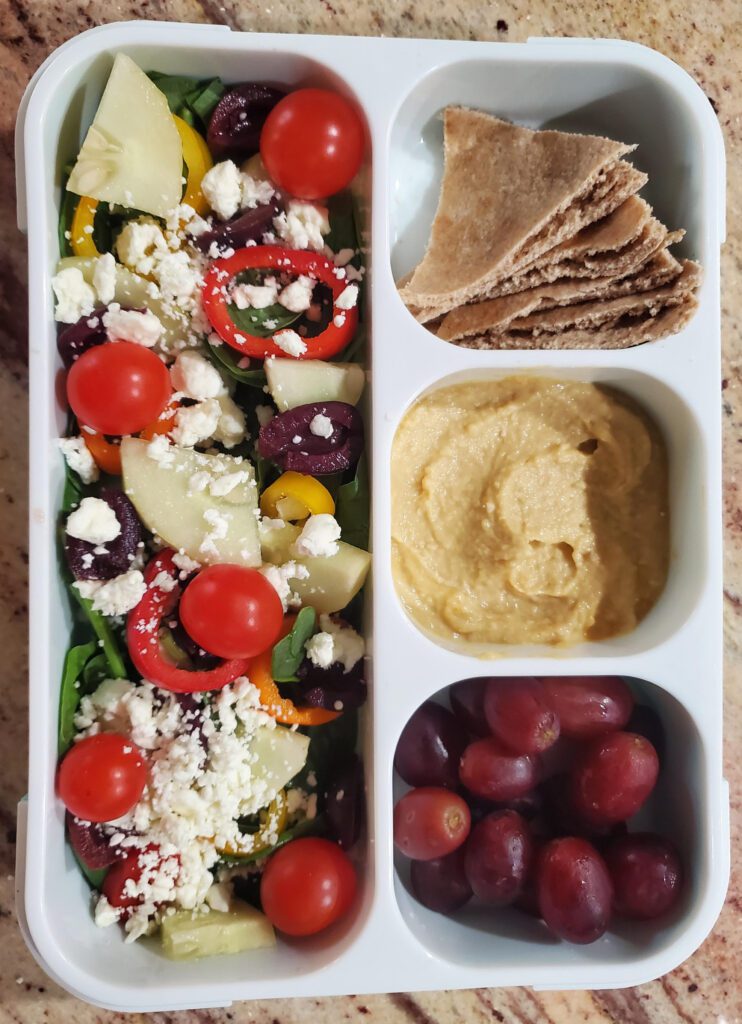
As an Amazon Associate, I earn on qualified purchases.

